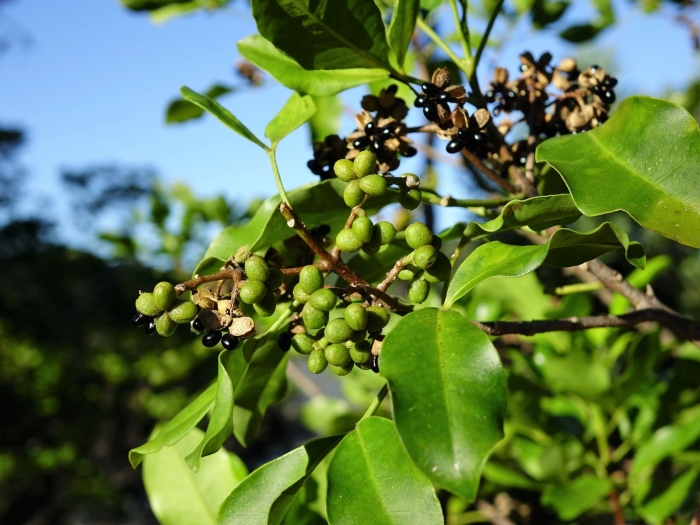Wharangi
(Melicope ternata)
Wharangi (Melicope ternata)
/
/

Jacqui Geux
CC BY 4.0
Image By:
Jacqui Geux
Recorded By:
Copyright:
CC BY 4.0
Copyright Notice:
Photo by: Jacqui Geux | License Type: CC BY 4.0 | License URL: http://creativecommons.org/licenses/by/4.0/ | Rights Holder: Jacqui Geux | Publisher: iNaturalist | Date Created: 2016-04-06T17:25:03-07:00 |

























Estimated Native Range
Summary
Melicope ternata, commonly known as wharangi, is an evergreen shrub or small tree native to coastal forests, scrublands, and forest margins of New Zealand, including the North, South, Three Kings, and Kermadec islands. It typically grows up to 20 feet (6 meters) tall and is characterized by its glossy, green trifoliate leaves, which are arranged in whorls of three. Wharangi blooms in spring with small, inconspicuous cream or white flowers, followed by fruit that contains black seeds, which are an important food source for native birds.
Wharangi is valued for its hardiness and attractive foliage, making it a suitable choice for coastal plantings, urban gardens, and as a hedge or screen. It thrives in full sun to part shade and prefers well-drained soils, tolerating a range of soil types. While it is relatively low-maintenance, it benefits from occasional pruning to maintain its shape and promote denser growth. Gardeners should be aware that Melicope ternata can suffer from root rot if overwatered or planted in poorly drained soils. It is also susceptible to scale insects and sooty mold. Despite these potential issues, wharangi remains a popular ornamental plant in New Zealand due to its resilience to coastal conditions and its ecological value in supporting wildlife.CC BY-SA 4.0
Wharangi is valued for its hardiness and attractive foliage, making it a suitable choice for coastal plantings, urban gardens, and as a hedge or screen. It thrives in full sun to part shade and prefers well-drained soils, tolerating a range of soil types. While it is relatively low-maintenance, it benefits from occasional pruning to maintain its shape and promote denser growth. Gardeners should be aware that Melicope ternata can suffer from root rot if overwatered or planted in poorly drained soils. It is also susceptible to scale insects and sooty mold. Despite these potential issues, wharangi remains a popular ornamental plant in New Zealand due to its resilience to coastal conditions and its ecological value in supporting wildlife.CC BY-SA 4.0
Plant Description
- Plant Type: Shrub, Tree
- Height: 6-20 feet
- Width: 3-9 feet
- Growth Rate: Moderate
- Flower Color: White
- Flowering Season: Summer
- Leaf Retention: Evergreen
Growth Requirements
- Sun: Full Sun, Part Shade
- Water: Medium
- Drainage: Fast, Medium
Common Uses
Border Plant, Butterfly Garden, Low Maintenance, Street Planting
Natural Habitat
Coastal forests, scrublands, and forest margins of New Zealand
Other Names
Common Names: Threeleaf Melicope
Scientific Names: Melicope ternata , Entoganum laevigatum , Fagara octandra , Melicope ternata var. grandis
GBIF Accepted Name: